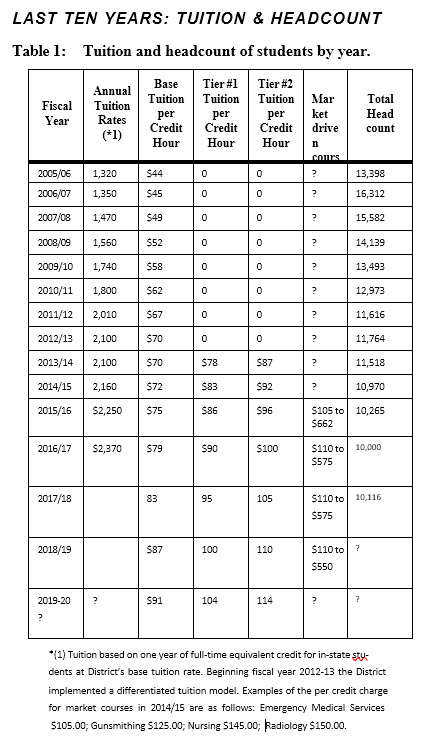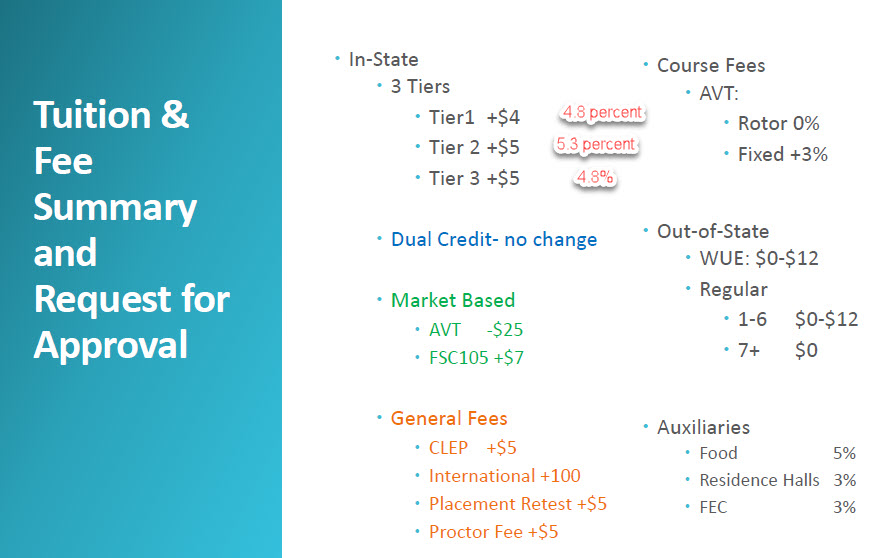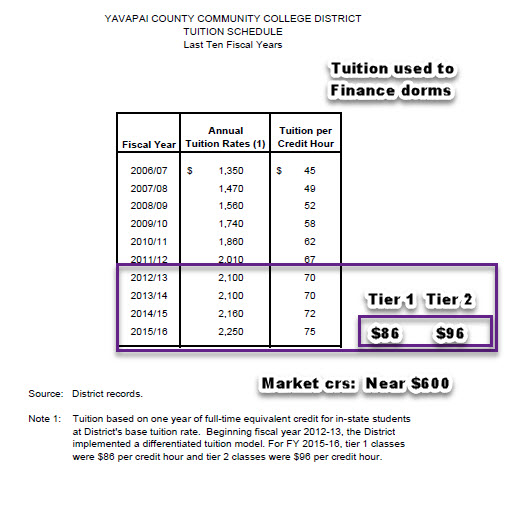Slashed student scholarships by hundreds of thousands in 2010-11 but approved a $103.5 million dollar building campaign in December 2013; to avoid taxpayer disapproval over 2013 project, it used sparse tax dollars for capital projects and ignored need to replace student scholarship money
 Anyone familiar with how the College Governing Board has operated in the past can only scratch their head at how it so easily trashed student institutional scholarships in favor of a $103.5 million dollar ten-year plan to essentially rebuild the campus and centers on the west side of the County.
Anyone familiar with how the College Governing Board has operated in the past can only scratch their head at how it so easily trashed student institutional scholarships in favor of a $103.5 million dollar ten-year plan to essentially rebuild the campus and centers on the west side of the County.
Recall that back in 2010-11 the College claimed it faced a financial crisis. It based the claim on a large reduction in state financial assistance. In response to the crisis, about $1 million dollars in student institutional scholarships were eliminated from the general fund. This meant that a very large number of deserving students no longer received scholarship aid; for many it probably meant no longer having access to post-secondary education.
Also recall that in December 2013 the College Administration created a $103.5 million dollar building plan, which the Governing Board approved in concept. This plan was essentially aimed at the campus and centers on the west side of the County. Astonishingly, without a whimper from the controlling West County voting bloc on the Board, the College moved ahead with the building plan financed from the general fund to pay for the construction. (Over repeated objection from east county former Board members Oliphant and Filardo and present Board member McCasland.)
Since December 2013 the College has plowed ahead with its building project (reducing it to about $65 million) without showing any real concern for its decision to eliminate the $1 million dollar in scholarships in 2010-11. (After almost a decade, the Board may finally replace about $100,00 of the $1 million at the February 2019 meeting.)
In a better world, the funds from the budget should have gone to student scholarships over the past decade rather than for capital construction.
The reason students were shafted is clear. The Governing Board feared sending the $103.5 development project to County voters and asking them to approve it via a General Obligation bond. They might have rejected it. If approved, it would have created a secondary tax but left the primary taxes in the general fund for student scholarships.
Because of fear of not getting their way on the huge building project, the previous Board and previous administration sacrificed student scholarships.
One hopes the new board and new administration will see students in a different light and give priority to scholarships over bricks and mortar. Replacing the $100,000 is a small step in the right direction.
 Yavapai Community College annually places about $800,000 in a fund to support what are described as “institutional scholarships.” However, it appears there is not a fair opportunity for all students to apply and be selected for one of these scholarships.
Yavapai Community College annually places about $800,000 in a fund to support what are described as “institutional scholarships.” However, it appears there is not a fair opportunity for all students to apply and be selected for one of these scholarships. Yavapai Community College has increased its base tuition in each of the last ten years in some form. The tuition increase has been at least twice the annual inflation rate each year.
Yavapai Community College has increased its base tuition in each of the last ten years in some form. The tuition increase has been at least twice the annual inflation rate each year. 
 Senate Bill 1217, sponsored by Cave Creek Republican Senator Heather Carter, would direct Yavapai Community College and other colleges in Arizona to create a new tuition rate for all students who graduate from Arizona high schools.
Senate Bill 1217, sponsored by Cave Creek Republican Senator Heather Carter, would direct Yavapai Community College and other colleges in Arizona to create a new tuition rate for all students who graduate from Arizona high schools.


